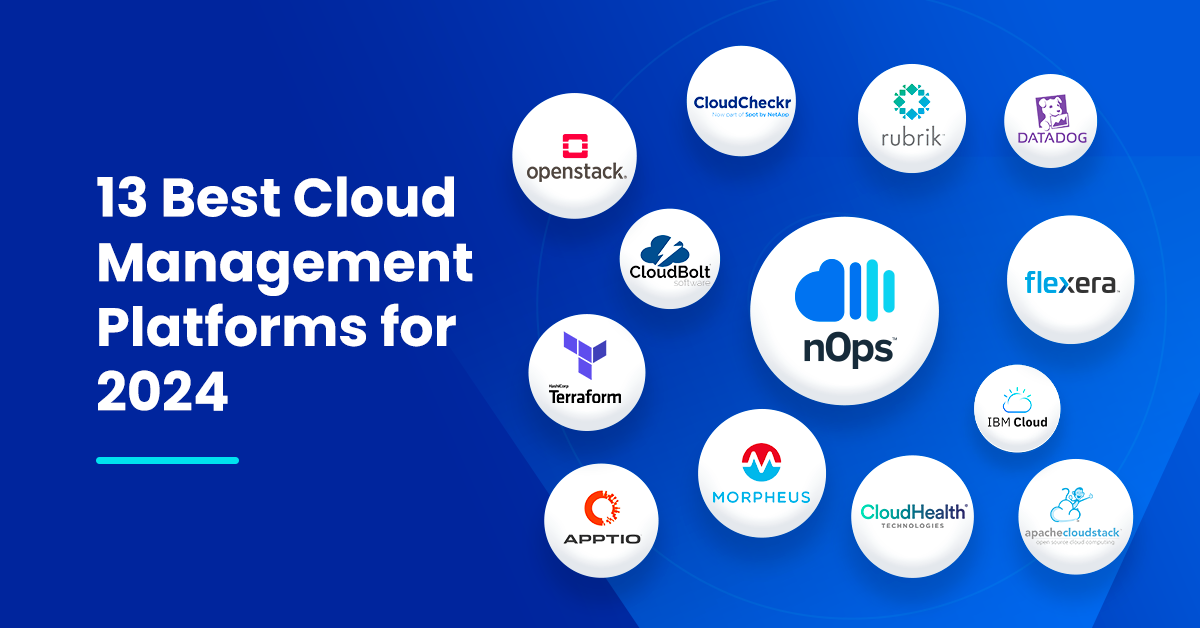Reducing cloud waste was named this year’s top challenge by the FinOps foundation. Yet, organizations are facing challenges like lack of visibility, complex pricing models, and inadequate tooling making it difficult to take action on cloud optimization.
Luckily, the latest and greatest automation tools can help. We put together this essential guide to the best Cloud Management Platforms of 2024, with rankings, pros and cons, updated pricing information, and more. You can also download the updated Buyer’s Guide for the full list.
What Are The Benefits Of Cloud Management Platforms?
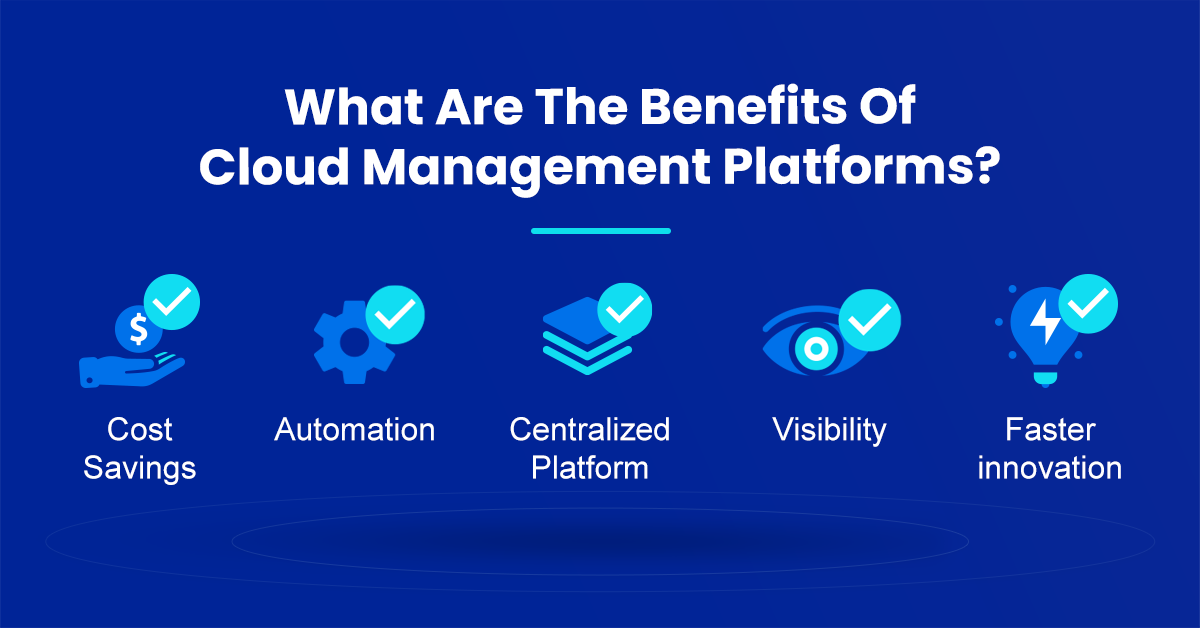
Here are some of the most important reasons why you may need a Cloud Management Platform.
Time savings. Yet the complexity of workloads, applications, services, and supporting infrastructure is increasing — meaning that it becomes more time-consuming and complicated to maximize the value of your cloud resources. The power of automation can help engineering teams quickly knock out manual tasks, so their time is freed for building and innovating.
Cost Savings: Cloud Management tooling can help with any number of cost saving opportunities like managing commitments, choosing instance types, optimizing workloads, identifying idle resources, rightsizing, and more.
Visibility: By helping with tagging, chargebacks, showbacks, cost allocation, and more, Cloud Management Platforms can help you get the visibility you need — enabling you to more easily track down anomalies, understand cost centers, forecast, budget and more.
Faster innovation. Eliminating cloud waste can help organizations save up to 50-60% on cloud costs, immediately freeing up resources that could be used for other purposes. And when organizations are confident in their cloud spend ROI, it becomes faster and easier to authorize further expenditures to accelerate new features.
Top Cloud Management Platforms of 2024
To achieve optimal performance and cost savings, it’s critical to pick the appropriate cloud management software for your requirements. Let’s have a look at some of the best cloud management platforms out there.
1. nOps
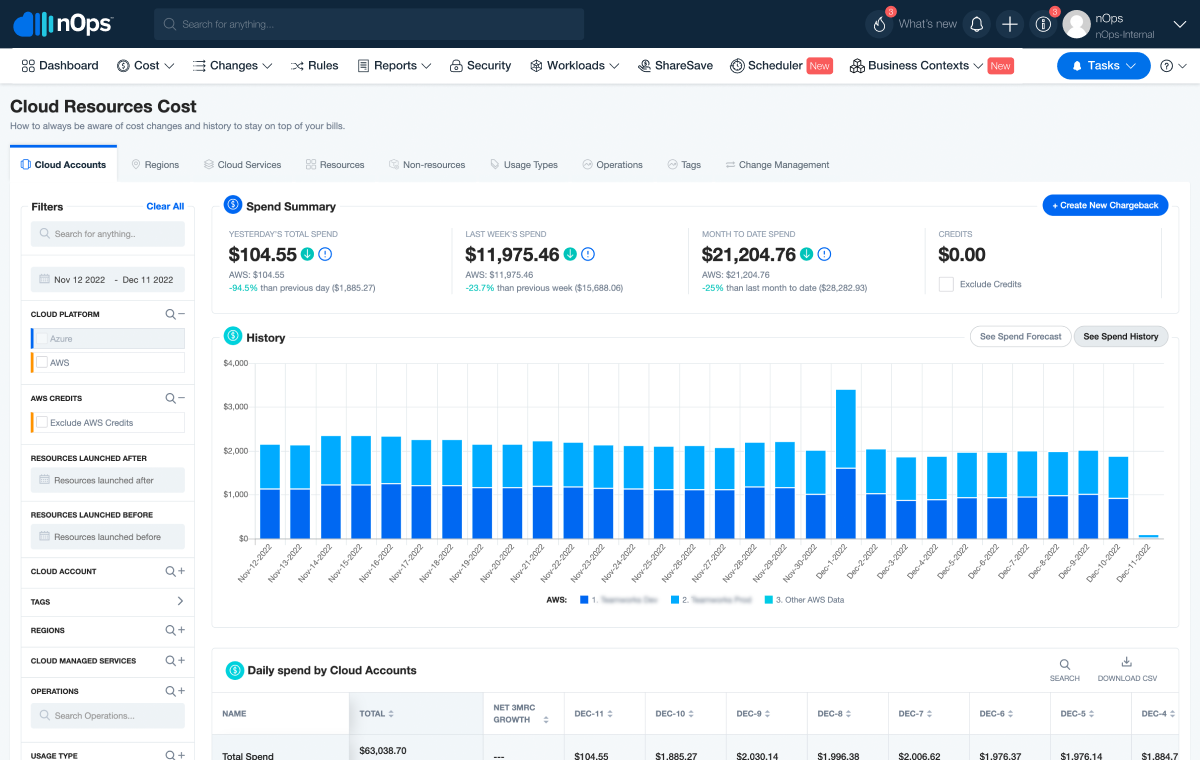
nOps is an AI-powered FinOps automation platform that helps AWS users reduce their costs by up to 50% on autopilot.
With nOps, users can benefit in two key ways. First, you pay less for what you use without the financial risk. nOps charges based on a fraction of your savings, so you only pay if you save.
Second, nOps offers a comprehensive suite of solutions tailored to your preferred tools and services, making it it simple and easy for engineers to take action. This all-in-one cloud management platform includes:
Cost Consideration Engine: automatically selects the optimal compute resource at the most cost-effective price in real time for you
Business Contexts: understand 100% of your AWS bill with cost allocation, chargebacks, showbacks, tagging
Commitment Management: risk-free automatic life-cycle management of your EC2/RDS/EKS commitments
nOps Essentials: suite of cost optimization tools that help you pause idle resources, schedule resources, optimize storage, rightsize and more.
AWS MAP Tracker: maximizes MAP funding, automatically tags resources, and tracks credits for efficient cloud migration
nOps has processed over 1.5 billion dollars in cloud spend and was recently named #1 in G2’s cloud cost management category. Book a demo to find out how to start saving with nOps today.
2. IBM Cloud Orchestrato
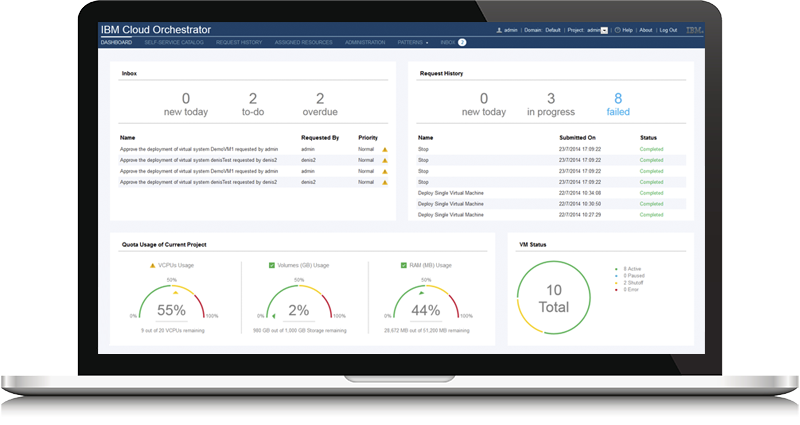
IBM Cloud Orchestrator helps you manage your cloud infrastructure, with end-to-end service deployment across infrastructure and platform layers. Additionally, Cloud Orchestrator supports quick and secure monitoring, management, and backup of your cloud environment.
IBM Cloud Orchestrator aims to provide a consistent, flexible, and automated way of integrating the cloud with customer data center policies, processes, and infrastructures across various IT domains. It provides a suite of tools for defining and implementing business rules and IT policies, in order to orchestrate automated and manual tasks across complex cloud environments.
Key Feature Highlights:
- Automation of cloud configuration
- Cloud services administration
- Cloud usage statistics
- Dashboards for executive costs
Pricing: Free version unavailable. Enterprise pricing on request.
3. Apache CloudStack
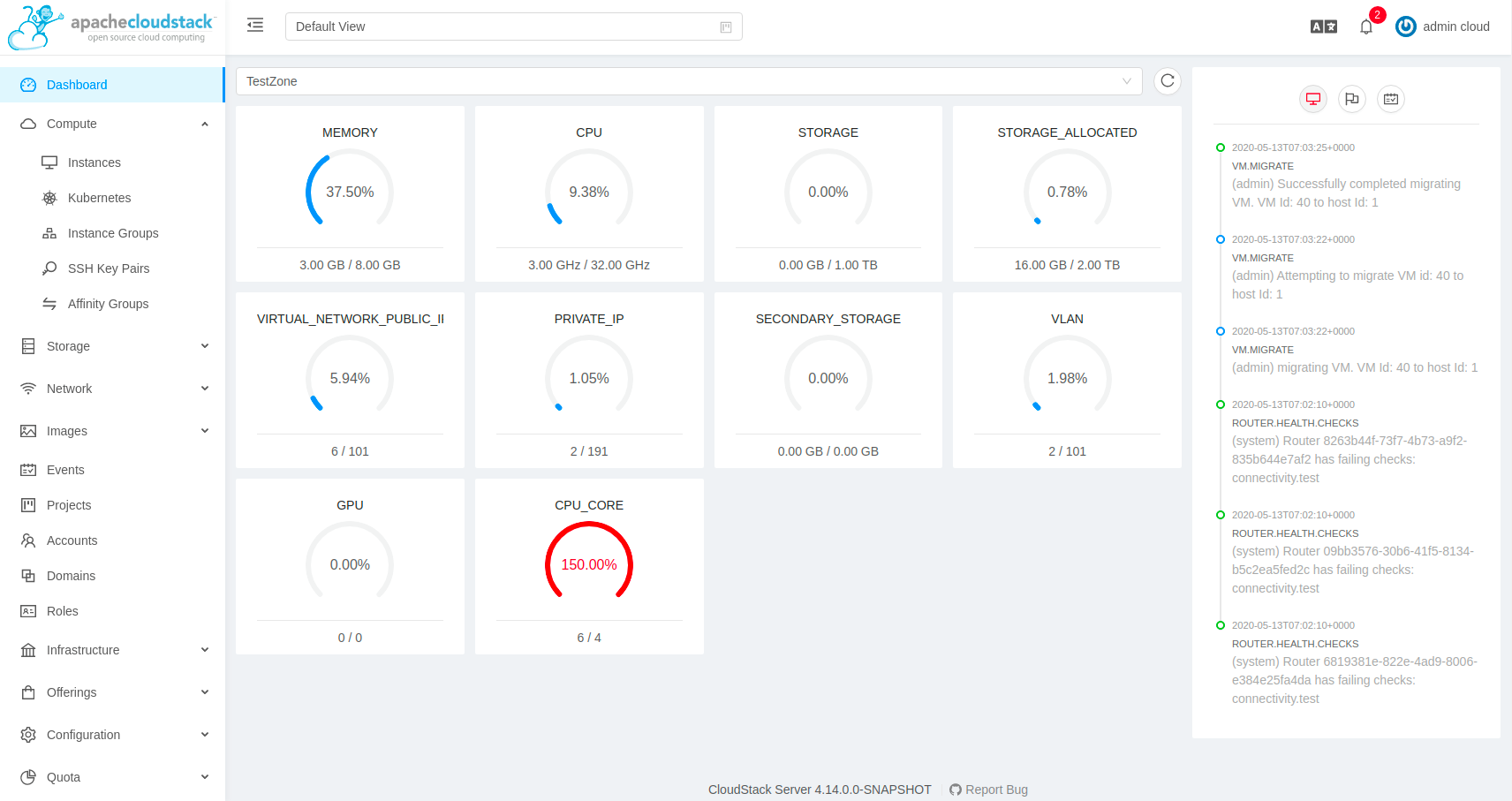
Apache Cloudstack is a versatile open-source cloud computing platform. It offers robust capabilities for managing VMs, as a highly available, highly scalable IaaS platform.
One of CloudStack’s main selling points is in the name: it aims to include the entire “stack” of features needed for Infrastructure as a Service (IaaS), including compute orchestration, Network-as-a-Service, user and account management, a full and open native API, resource accounting, with an easy to use user interface.
While CloudStack offers a robust feature set to manage cloud costs, it may pose a learning curve for newcomers with resource-intensive setup and maintenance. And, intricate configurations may be required for complex deployments, meaning that your team may have to invest some time to fully utilize CloudStack’s benefits.
Key Feature Highlights:
- On-demand EC2 Service Setup
- Resource Provisioner for End Users
- Automatic Cloud Configuration Management
- Scalable Infrastructure Management
- Multiple Hypervisor Support
Pricing: Free, open-source version available.
4. Apptio Cloudability
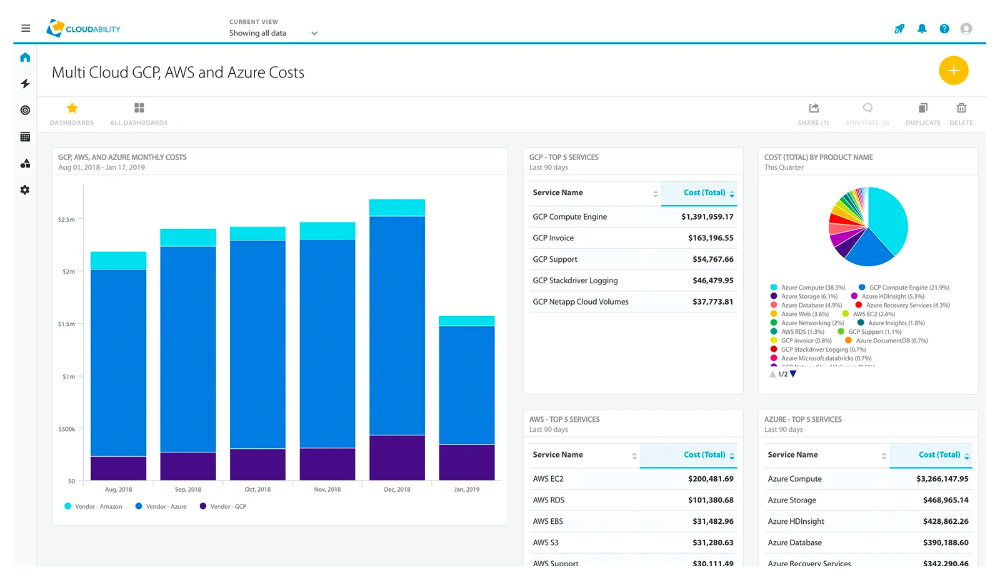
Apptio Cloudability is a cloud financial management platform that improves visibility and governance across cloud environments. It helps organizations optimize their cloud resources for cost, speed, and performance.
Cloudability provides budgeting, forecasting, and rightsizing features as part of its financial management solution. One major advantage of the tools is its FinOps focus. It helps executives correlate cloud spending to business value and helps Finance teams accurately track and forecast cloud spend for more robust budgeting.
While the tool has many financial and budgeting capabilities, it focuses less on linking cost changes and recommendations to the practical engineering side. Once Cloudability provides recommendations, the engineering team must accept, prioritize, and implement the recommendations.
Key Feature highlights
- Management of resource and capacity usage
- AI-powered anomaly detection
- IT operations administration
- Performance SLAs
Pricing: Free trial available. Enterprise pricing available upon request.
5. Morpheus Data
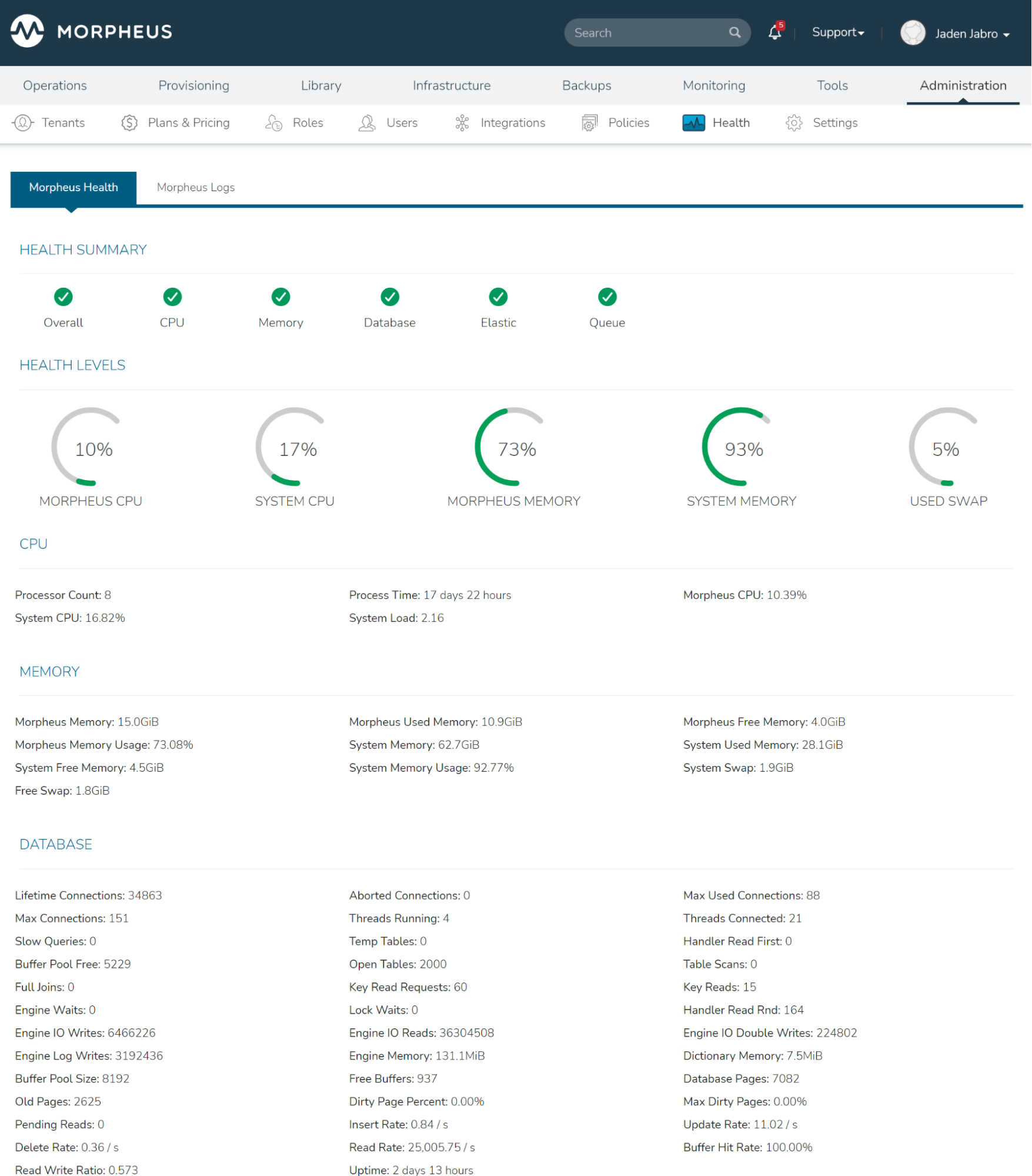
Morpheus Data is a cloud management and orchestration platform. Initially designed for DevOps practitioners, it offers features for building application infrastructure, governing hybrid clouds, automating cloud management workflows, optimizing cloud cost and more.
Morpheus has many robust features for managing virtual machines, containers, and the application development lifecycle. It also integrates with many common DevOps tools such as Terraform, Git, Ansible, Jenkins, Puppet, Chef, and others.
Key Feature highlights
- Automatic Logging
- Cloud Monitoring and Alerts
- One-click Provisioning
- FinOps Analytics Tools and Reporting
Pricing: Contact Morpheus Data for a quote. More information can be found here.
6. CloudHealth by VMware
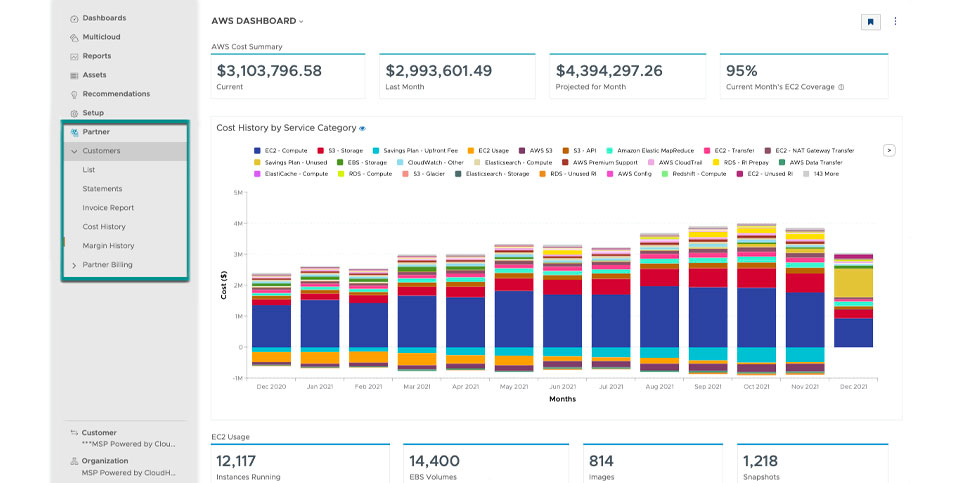
CloudHealth enables users to manage their cloud costs, usage, performance and security through a single interface. Since it was acquired by VMWare, the CloudHealth Partner Program leverages the platform to help partners of VMWare manage their cloud costs, improve efficiency and monetize their public cloud businesses.
Some of CloudHealth’s advantages include its comprehensive set tools to manage, analyze, and optimize cloud infrastructure and spending, as well as its multicloud capabilities. However, some find its reporting capabilities to be lacking in customization and granularity.
Key Feature Highlights:
- Suited for sophisticated cloud architecture
- Infrastructure optimization to reduce costs
- AWS, Azure and GCP cloud environment monitoring
- Security & Compliance features
Pricing: Free trial available. Enterprise pricing on request.
7. Terraform

Terraform is an open-source infrastructure as code (IaC) tool developed by HashiCorp. It is of the most popular cloud infrastructure and DevOps tools available today. Terraform allows users to build, change, and version cloud infrastructure safely and efficiently, through automated provisioning and resource management.
Terraform’s modularity, large community, and extensive ecosystem of modules make it a compelling choice for automating infrastructure provisioning, IaC, and cloud-native application development.
Key Feature Highlights:
- Codify and provision multicloud architecture
- Remote state management
- Version control integration
- Manage Kubernetes, network infrastructure, virtual images and more
Pricing: Free to get started, with in-place upgrade to paid option.
8. OpenStack
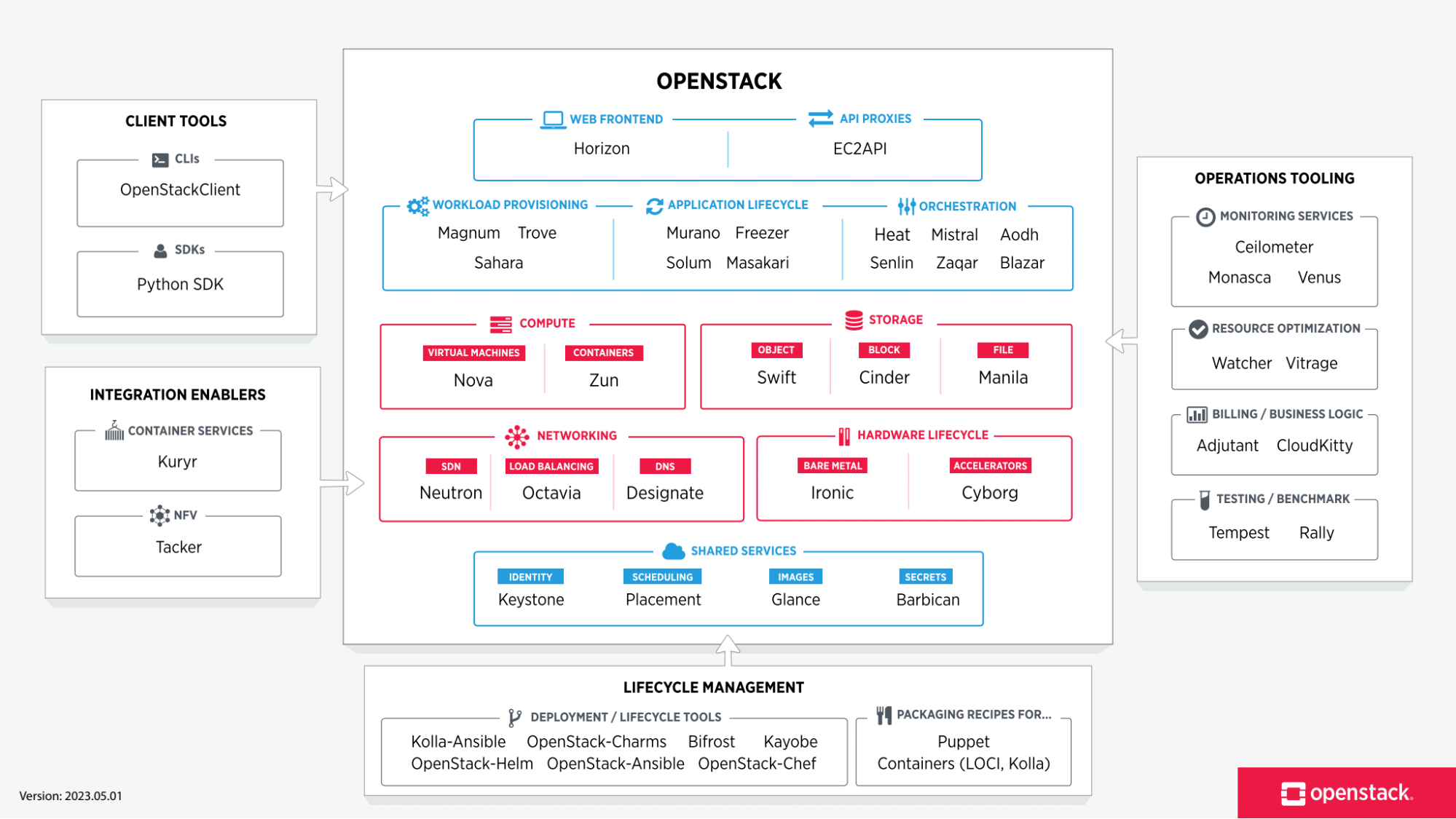
OpenStack is an open source cloud computing infrastructure software project. It helps manage your compute, storage, and networking resources, through APIs or a dashboard.
Beyond standard infrastructure-as-a-service (IaaS) functionality, additional components provide orchestration, fault management and service management (among other services) to ensure high availability of user applications.
Key Feature Highlights:
- Nova: full management and access tool for compute resources
- Neutron: Networking-as-a-Service
- Swift: object storage
- Cinder: block storage
- Keystone: authentication
- Glance: VM management
Pricing: OpenStack is an open-source, free platform.
9. CloudBolt
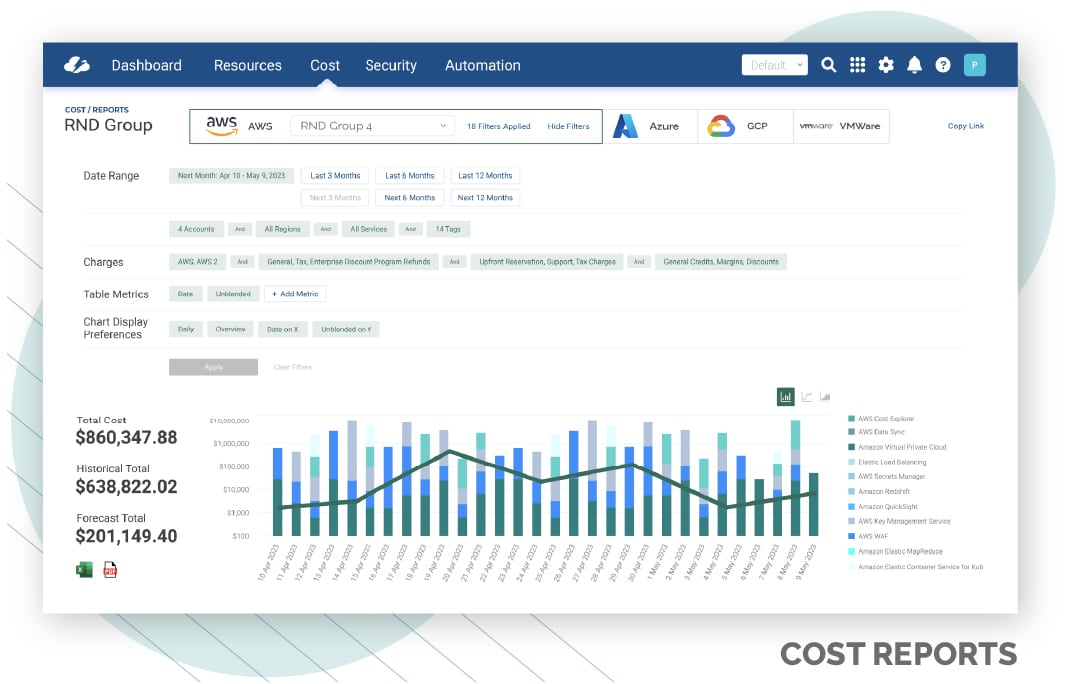
CloudBolt‘s hybrid cloud management platform enables enterprise IT departments to build, deploy, and manage private and public clouds. Its management and automation solution helps provision, manage, and optimize resources across cloud providers.
It offers cloud management tools covering a range of functions such as cloud cost optimization, automation, dashboards and reporting, security and governance, and billing.
Key Feature Highlights:
- Self-service IT
- Multi-cloud and Hypervisor Management
- Brownfield Deployment and Discovery Service
- Lifecycle Management an Orchestration
- Cost Transparency and Service Health
Pricing: Available upon booking a demo
10. CloudCheckr
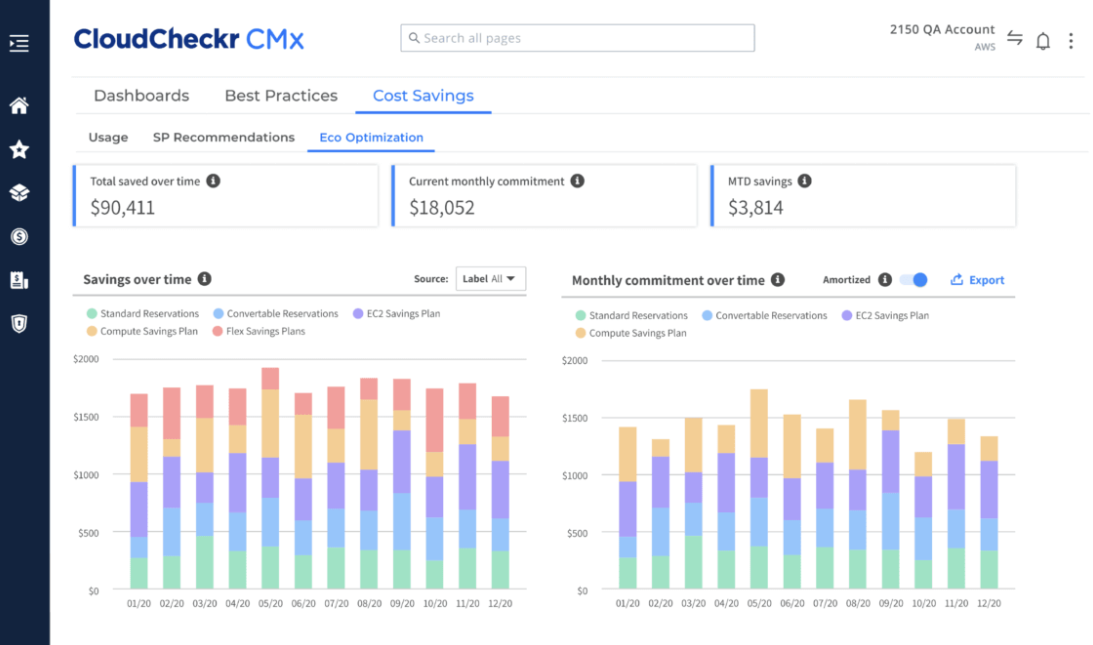
CloudCheckr is an end-to-end cloud management platform. It brings visibility and intelligence to help you lower costs, maintain security and compliance, and optimize cloud resources.
If you’re looking to take advantage of AWS Spot, CloudCheck offers many Spot-focused products such as Spot Eco (Cloud Cost Optimization), Spot Ocean (Containers), Spot Elastigroup (Infrastructure), and Spot Portfolio (CloudOps).
Some of CloudCheckr’s advantages include its visibility and monitoring tools, its alert systems, and its end-to-end capabilities. On the other hand, some find that it has a steep learning curve for beginners and that some of its cost-reporting capabilities may have inaccuracies.
Key Feature Highlights:
- Compliance management (AWS WAFR)
- Cloud Services and Billing
- Resource Utilization Manager
- Cost Optimization and Visibility
Pricing: Free trial available. Enterprise pricing on request.
11. Flexera
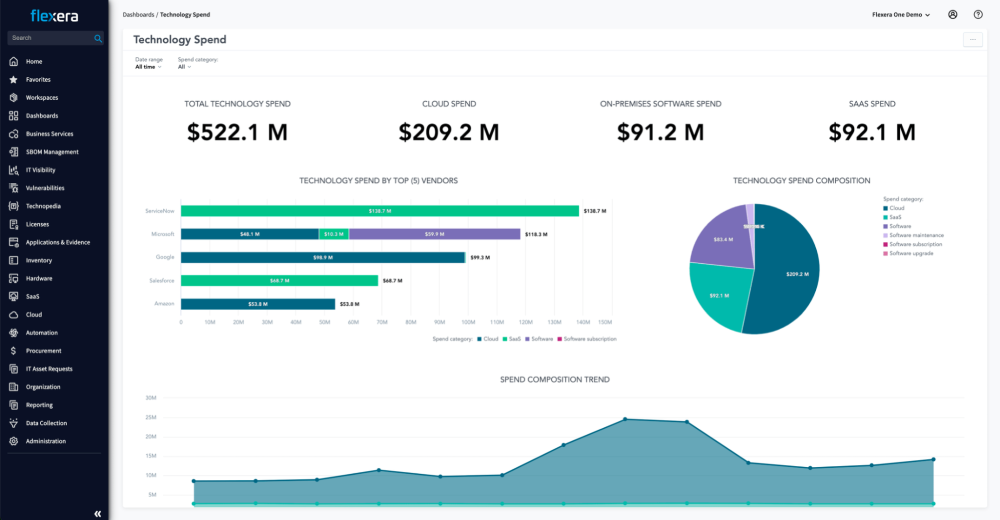
Flexera’s mission is to improve visibility, allocation and efficiency of cloud spend at scale. It provides actionable recommendations, budget controls, and cost policies to help your organization avoid surprises and reduce unnecessary cloud spend.
One of its compelling selling points are the automation tools it provides to act on recommendations, making your cloud optimization and governance more scalable and efficient.
The disadvantages of Flexera include its relatively simple dashboards, monitoring, and reporting capabilities. Some find that these features require further development and documentation to reach their full potential.
Key Feature Highlights:
- Common Normalization engine across Flexera’s applications
- Contemporary user experience and navigation
- Built on a modern microservices architecture that provides faster processing
- Automated policy-based governance
- Unified view of public and private cloud resources
- Open API architecture to integrate with other business systems
Pricing: Fixed Annual Cost of $40,680 for organizations with $125,000 of monthly AWS spend.
12. Datadog
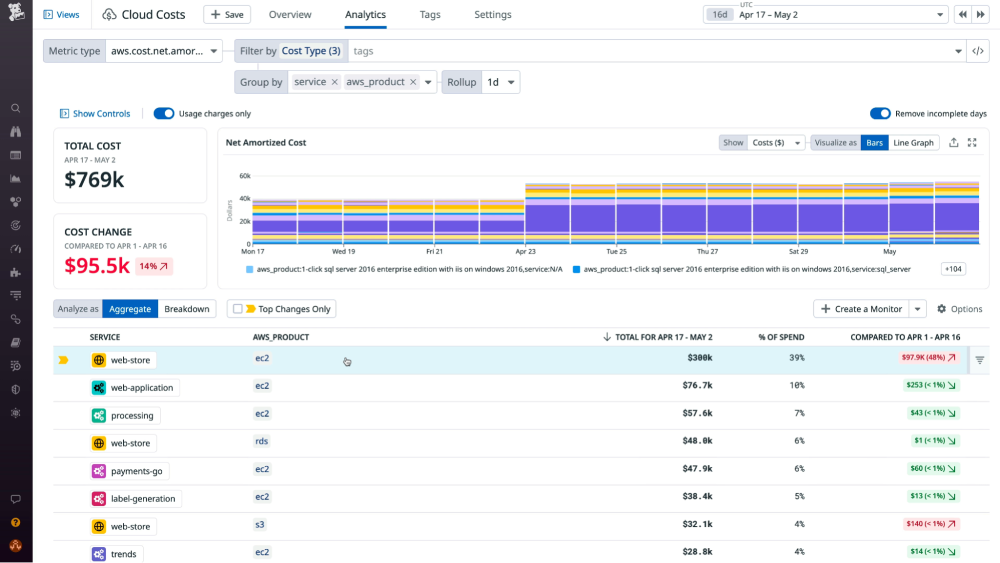
Datadog is one of the most popular monitoring and observability tools today, aggregating metrics and events across the full DevOps stack. While it’s not purely a cloud cost management tool, Datadog Cloud Cost Management can help you optimize your cloud spending by delivering the cost data engineers need and with resource-level context like CPU, memory, and requests. This data is easily scoped to their services and applications so that they can take action and spend effectively.
Datadog also helps you drill down into your AWS or Azure bill, helping you to allocate your cloud costs and make better cost decisions with confidence. Recently, Datadog and nOps have partnered together to make it even easy for engineers to take action on rightsizing recommendations.
Key Feature Highlights:
- SaaS and Cloud providers
- Automation tools
- Monitoring and instrumentation
- Source control and bug tracking
- Databases and common server components
- All listed integrations are supported by Datadog
Pricing: $0-34 per month, with volume discounts available.
13. Rubrik
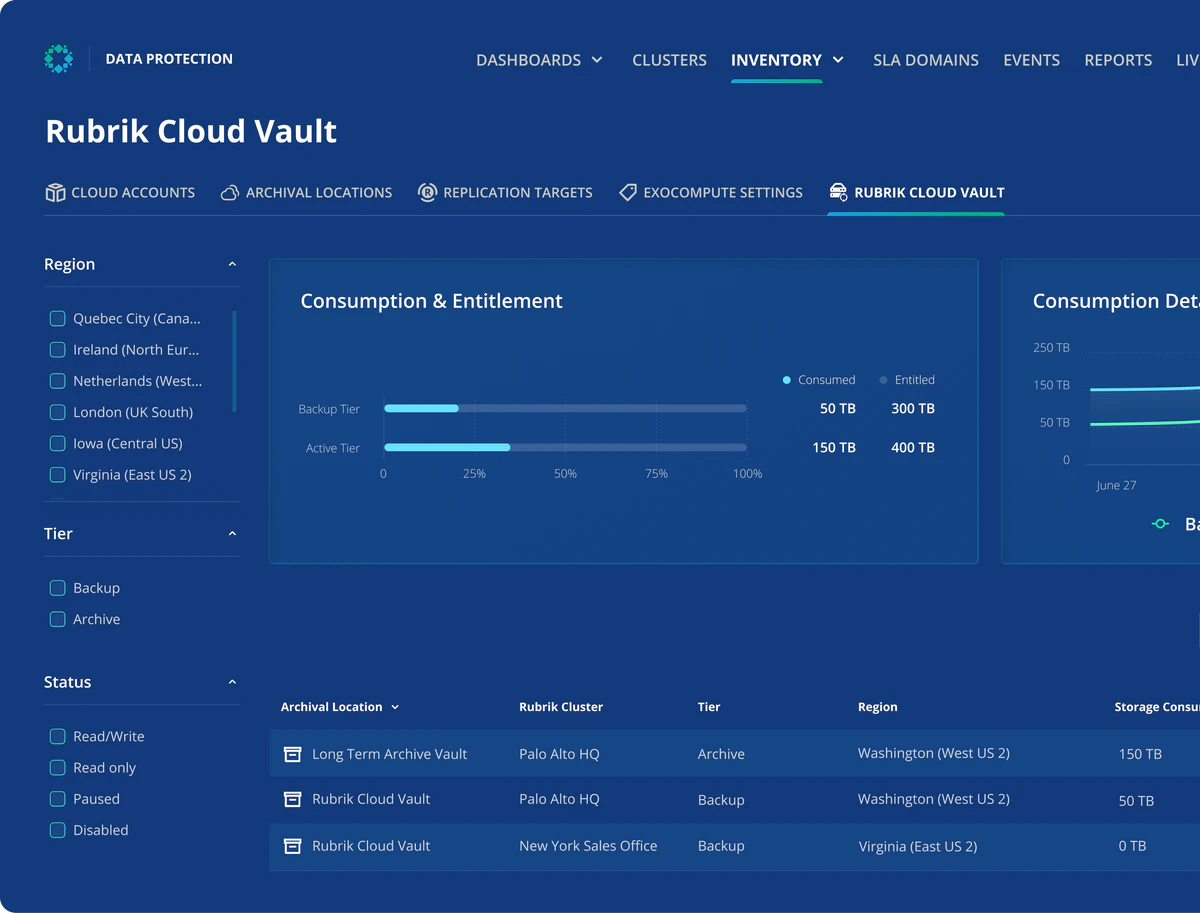
While technically not a dedicated cloud management platform, Rubrik can be a key part of your cloud management toolbox. Rubrik is a data management and protection platform, with cloud integration and cloud data management capabilities.
The platform helps you unify your data management clouds and cyber-proof your Azure, AWS and GCP cloud application data with secure, access-controlled backups.
Key Feature Highlights:
- Modernized cloud recovery and backup at scale
- Easily lift & shift data to the cloud
- Analytics, data governance, and compliance features
- API integrations for Rubrik Cloud Data Management
Pricing: Available upon booking a demo
14. Nutanix
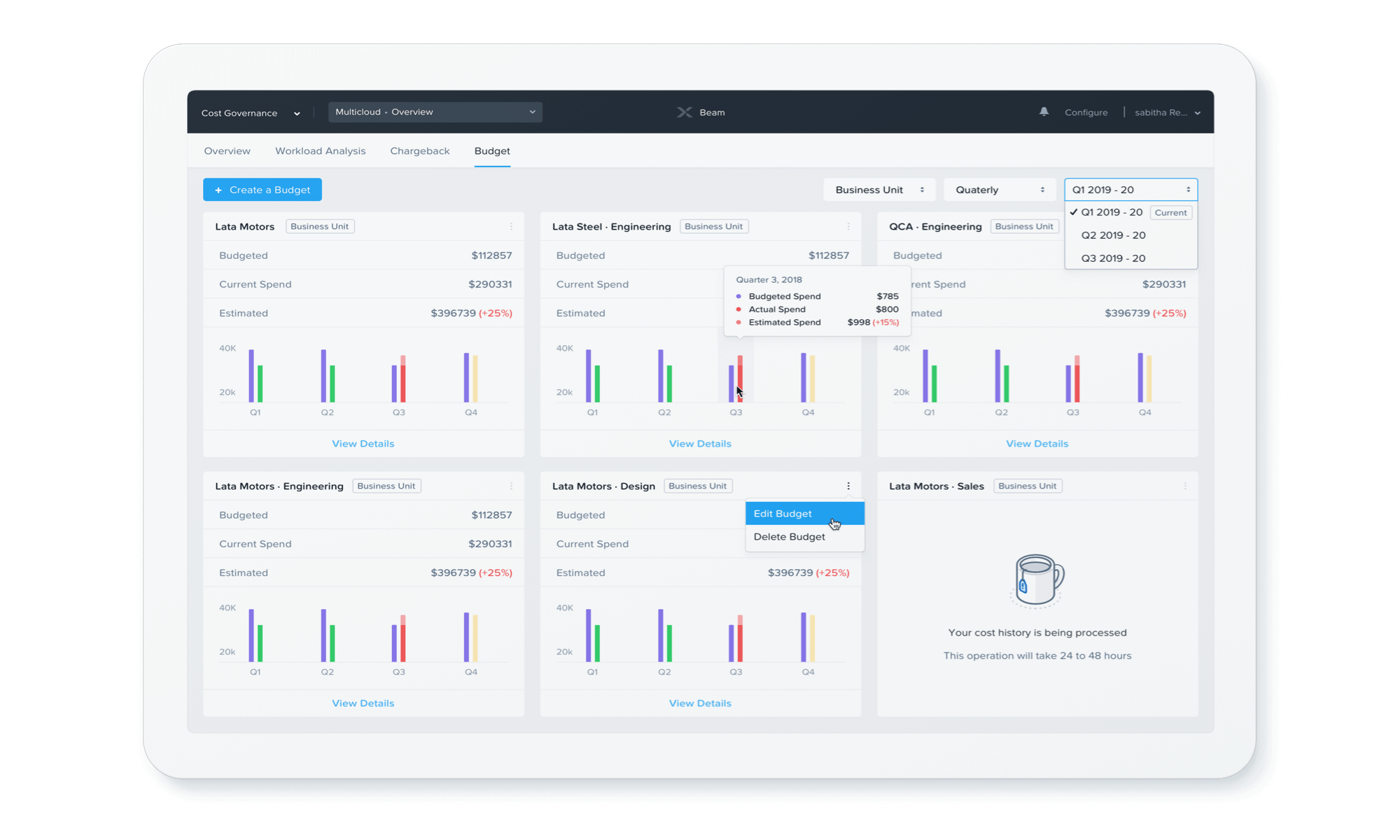
Nutanix stands out in the cloud management space with its emphasis on hyper-converged infrastructure. By integrating compute, storage, and virtualization, it offers a simplified cloud environment. Its platform is lauded for an intuitive interface and strong automation features, which ease application deployment and management across diverse clouds.
Hyper-converged Infrastructure: Streamlines data center operations by integrating compute, storage, and virtualization.
User-friendly Interface: Designed for ease of use, enhancing operational efficiency.
Robust Automation: Facilitates streamlined deployment and management of applications.
Management of Multi Cloud Environments: Enables consistent operations across various public cloud services, such as Amazon Web Services, Google Cloud Platform, Microsoft Azure, and more.
How to choose the best Cloud Management Platform?
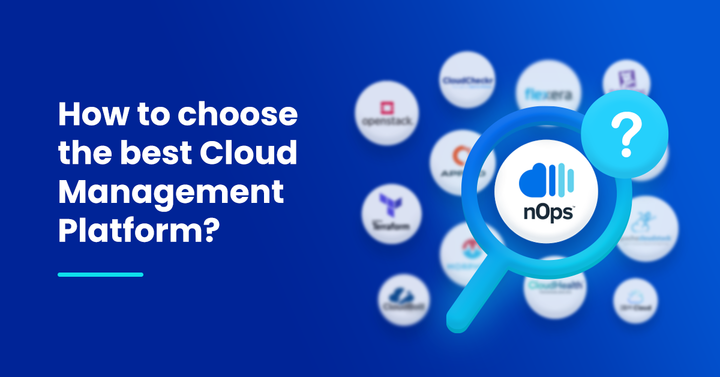
To choose the best Cloud Management Platform, you need to consider a few factors.
- Feature set. Does the platform support the essential functions (such as monitoring, cost optimization, security, etc.) required by your team?
- Ease of use. Does the platform integrate with your current tools? Is the UI intuitive and user-friendly?
- Cost. Consider the platform’s pricing model, whether subscription-based, pay-as-you-go, or tiered; as well as any additional costs for premium features.
- Credibility. Cost optimization recommendations aren’t valuable unless you trust them enough to take action. Reviews, testimonials, case studies and certifications may suggest a platform has achieved proven success with other customers.
At nOps, our mission is to make it easy for engineers to take action with dead simple integrations tailored to their preferred tools and services. nOps is helping teams save 50% or more on cloud spend.
We charge a fraction of the savings, and only make money if you save. That means nOps fits any team size, clientele base, and allocated budget.
nOps is an AWS Select Tier Services Partner and AWS Marketplace Seller, and was recently named #1 in G2’s Cloud Cost Management category.
Check out our many customer success stories or book a quick demo to start saving more today.

